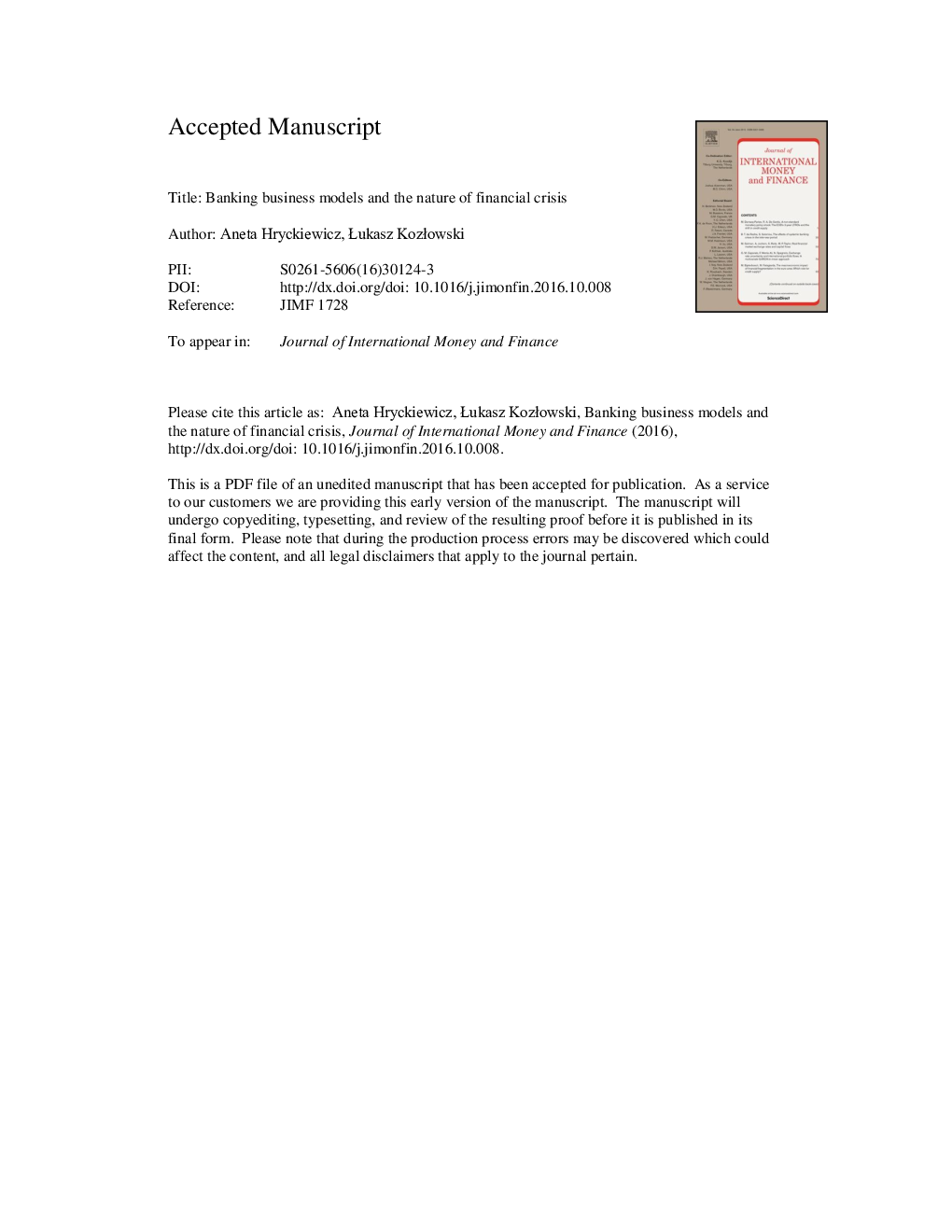| Article ID | Journal | Published Year | Pages | File Type |
|---|---|---|---|---|
| 5101147 | Journal of International Money and Finance | 2017 | 54 Pages |
Abstract
In our paper, we analyze heterogeneity among the various business models that incorporate systemically important banks in 65 countries over the period of 2000-2012. For the first time, we identify true banking strategies in a portfolio context, that is, consisting of various combinations of bank assets and funding sources. Next, we estimate the way distinct strategies have affected bank profitability and risk before the crisis, as well as their impact on the mortgage crisis. We demonstrate that during the mortgage crisis, the investment model indicated the lowest individual risk and highest systemic risk simultaneously. Consequently, we document that the funding structure was responsible for the systemic effect of the mortgage crisis. Further, we demonstrate that countries with systemically important banks that rely on investment activities experience a greater, but more short-lived decline in GDP, when compared to countries that have predominantly traditional banking activities.
Keywords
Related Topics
Social Sciences and Humanities
Economics, Econometrics and Finance
Economics and Econometrics
Authors
Aneta Hryckiewicz, Åukasz KozÅowski,
